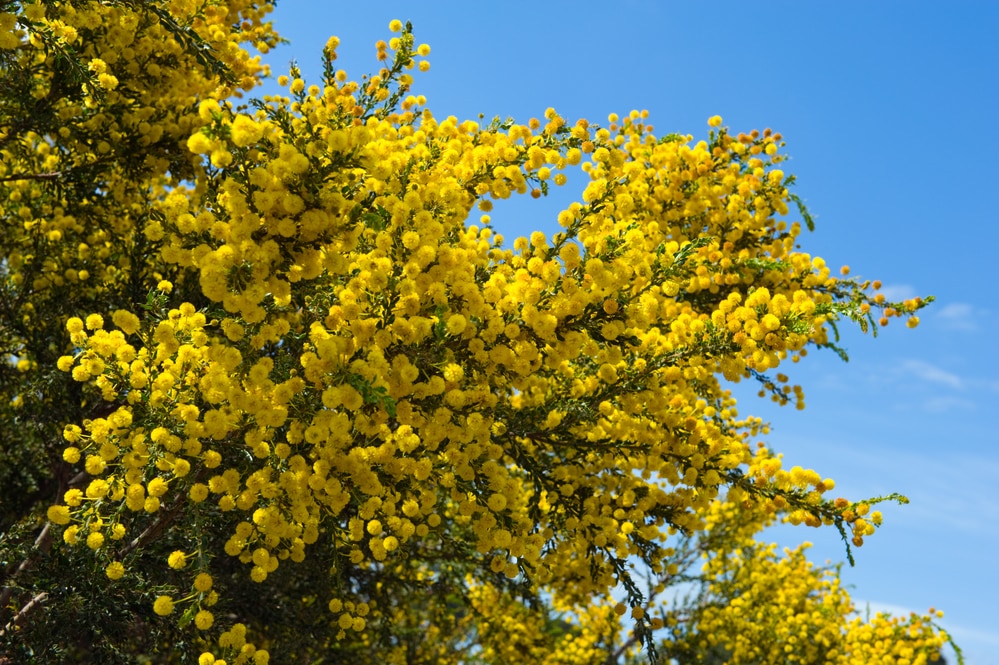For hardy, low-maintenance plants that will beautify your garden, look no further than your own backyard – well maybe not quite yet. Natives are often overlooked when it comes to landscaping, but they can actually be then answer to many of your gardening woes.
Many people find that a lot of their plants are impossible to keep alive during the harsh summer climate, but you may not realise this is because many of them were introduced and just aren’t designed to be able to cope with the heat. Australian natives, on the other hand, have evolved to survive and even thrive these severe conditions.
The Benefits of Planting Natives in Your Backyard
Heat, drought, and poor soil quality all characterise Australia’s environment. That means species that are used to heavy rainfall and rich nutritious soil struggle here. Because they have evolved to suit the Australian climate, natives generally look after themselves, meaning they don’t require much (if any) mulching, fertilising or watering.
Basically, if you’re a lazy gardener with better things to do than standing in the hot sun this summer, natives are the perfect option for you.
Which Species is Right for You?
If you’re unsure which species will best suit your backyard, here’s a guide to some of our favourite Australian natives.
Common Heath
The common heath comes in a range of different colours including white and scarlet, but it is the pink species which was crowned as the floral emblem of Victoria. They can withstand a variety of soil types from extended dry periods to constant moisture.
Kangaroo Paw
These beautiful bright red flowers bring a splash of colour to any garden. Kangaroo paws grow best in well-drained soil with bright sunlight. They work well in both garden beds and pots, and will reward you with rich flowers from late winter until summer.
Banksia
Banksia, which are also commonly called Australian honeysuckles, are known for their distinctive cone-shaped flowers. They work well both in the ground and in pots, and are suited to well-draining soil and full sun. Just ensure that you allow them room to grow, as they have a tendency to spread.
Lilly Pilly
Also known as Australian cherries, lilly pillies produce edible red fruit that are perfect for jam-making. Generally, lilly pillies will grow to around five or six metres in height but will continue to be happy even when heavily pruned. Hardy and low-maintenance, lilly pillies will thrive just about anywhere as long as they receive adequate moisture.
Finger Lime
Another edible Australian species, finger limes contain little ‘pearls’ which pop in your mouth with a burst of tangy flavour. They are slow-growing and prefer frost-free environments with richly composted soil.
Eucalyptus
Quintessentially Australian, eucalypts – also known as gum trees – are easily adaptable and come in a range of different species to suit any garden. They’re a great way of providing your backyard with a bit of shade and can even offer a burst of colour with their flowers (or gumnuts), depending on the time of year.
Sturt’s Desert Pea
Sturt’s desert peas are the floral emblem of South Australia, but that doesn’t mean you can’t have them in your Victorian backyard. They can provide a pop of colour with their incredibly bright red flowers with black pea-like spots. Just be warned, they can be a bit tricky to grow and require good drainage and full sunlight.
Wattle
As the floral emblem of Australia, the wattle has bright yellow balls of flowers and a lovely fragrance. Fast growing and hardy, wattles like bright sunlight and well-drained soil. To keep them from looking unruly, make sure you lightly prune them as needed.
Waratah
The waratah is the floral emblem of New South Wales. It has dramatic, fiery red, leathery flowers. Depending on the species, they can be quite tricky to grow and prefer very well-drained soil and regular watering.
Need Help?
If you’re unsure how to incorporate natives into your backyard, or need some help ensuring that they thrive, Everlast Services can help you out. With over 20 years’ experience, we can give you advice regarding the best natives for your garden and how to effectively incorporate them into your landscape design. We can even do all the hard work for you, allowing you to sit back, relax and admire the finished result.
Contact Everlast Services Today
- Call us on 03 9369 2066
- Email us at sales@everlastservices.com.au
- Complete our quick and easy quote request form
- Visit our showroom at 443 Old Geelong Road, Hoppers Crossing. We’re open:
- Monday to Friday: 8:30am – 5:00pm
- Saturday: 9:00am – 1:00pm
- Sunday: Closed
